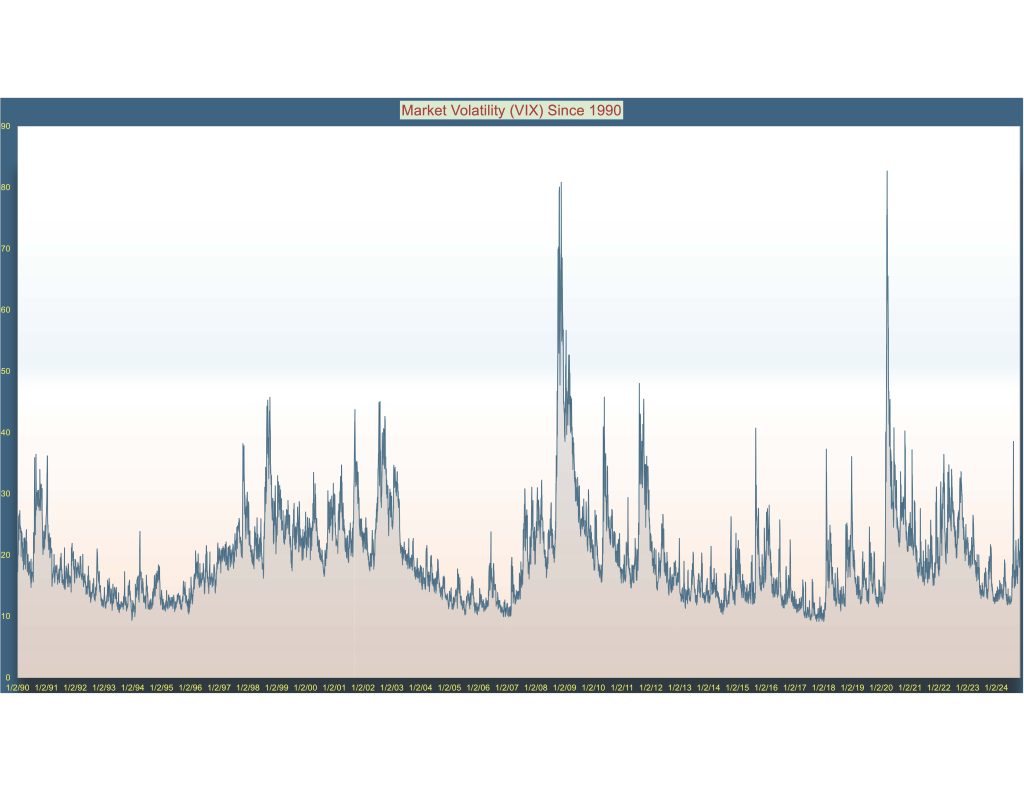By: Sreeni Meka, Lakeland Wealth Management
The CBOE Volatility Index (VIX) is a real-time index representing the market’s expectations for the relative strength of the S&P 500 Index (SPX) near-term price changes. The Volatility Index measures implied volatility, the estimated volatility of an asset underlying the S&P index. A higher VIX value indicates greater anticipated volatility, while a lower VIX value suggests market stability. The VIX is considered a leading indicator of the broad U.S. stock market and is often widely considered to represent one of the most trusted gauges of investor sentiment.
The historical daily VIX has averaged around 19 since 1990 and reached as high as 82 during distressed periods, recently during the COVID period in mid-March 2020 and November 2008 during the housing market crisis. When markets were calm, the VIX dropped to as low as 9 in November 2017.

Peak volatility is often associated with an economic crisis, such as the housing market correction in 2008, a pandemic period like 2020, or unexpected events like September 2001.
Compared to extraordinary events, election-period volatility is not an outlier. During the last eight elections, starting from 1992 to 2020, the volatility index was 17.33, 17.65, 24.91, 16.18, 47.73, 17.58, 18.74, and 35.55, respectively. During the last election, volatility spiked to 36, but markets were relatively calm in the following four years.
When markets know about future events like the elections, they already digest the expected and known binary events. The volatility adjusts accordingly, regardless of election results, even though there is a knee-jerk reaction right after the election results.
PHOTO CREDIT: https://www.shutterstock.com/g/VectorBird
VIA SHUTTERSTOCK
DISCLOSURE
Investing involves risk, including the possible loss of principal. Diversification does not ensure a profit nor guarantee against a loss.
This material represents an assessment of the market environment at a specific point in time and is not intended to be a forecast of future events, or a guarantee of future results. This information is not intended to be individual or personalized investment or tax advice and should not be used for trading purposes. Please consult a financial advisor or tax professional for more information regarding your investment and/or tax situation.



